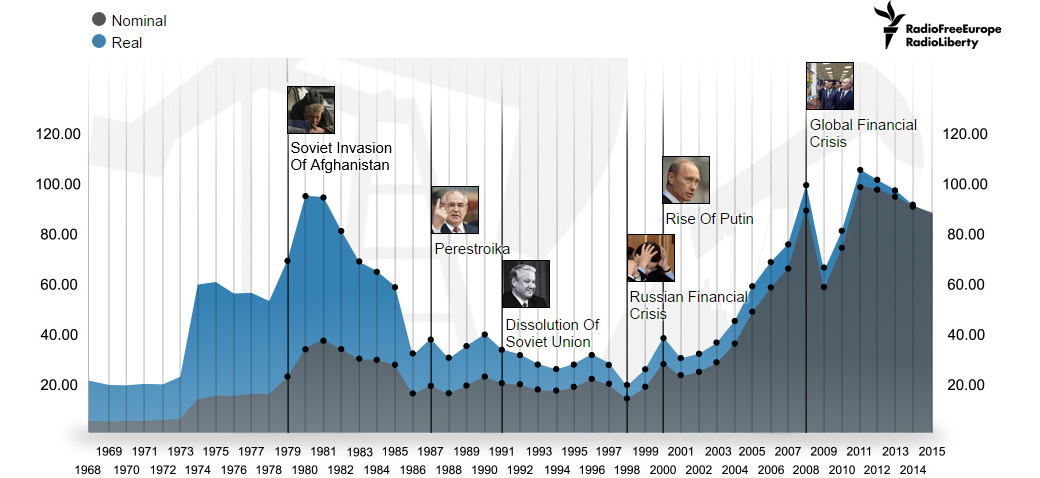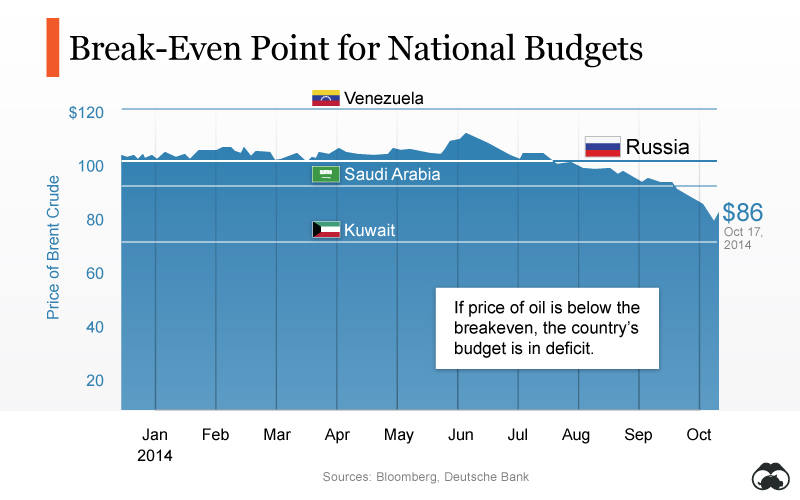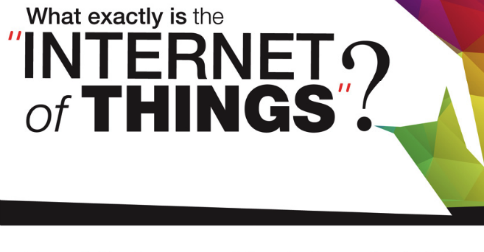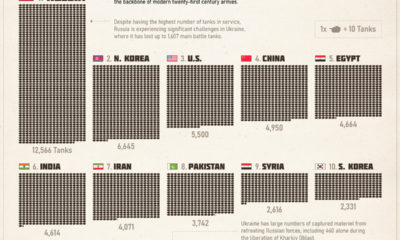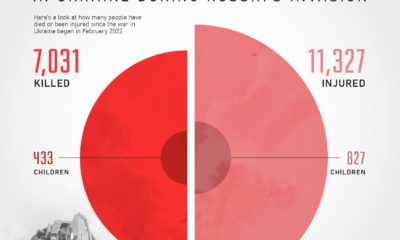A Crude Problem For Putin’s Russia
Western sanctions against Russia that stemmed from the events in Ukraine have not yet put a significant dent in the country’s economy or changed their plans abroad. However, over the last three months, the slumping price of crude oil may be the factor that finally makes Moscow blink. While Brent oil has traded throughout the year at around $110/bbl, it is only recently that the price has dropped to closer to $85. A combination of items have contributed to crude’s steep drop including a stronger US dollar, slowed economic growth in Europe and China, and increased US shale oil and gas production. Some countries benefit from having oil as a cheaper input, but Russia is not one of them. Russia is the second largest exporter of oil selling 7.2 million bpd in global markets, which equates to about 45% of Russia’s budget revenues. Deutche Bank has calculated the breakeven price for Russia’s fiscal situation at an oil price at $102/bbl.
The impact of this is already showing up in the Kremlin’s finances. Not only does Russia forgo extra revenue towards its budget, but it also hurts the exchange rate of the country’s currency. So far this month, Russia has spent upwards of $7 billion propping up the rouble, which is trading at record lows. A previous crash in oil prices in the 1980s was at least partly responsible for bankrupting the Soviet Union, and this time the stakes could also be high. Putin’s support will stay high as long as business is good and the country keeps its pro-Russia stance. However, it remains to be seen what kind of pressure that a more long-term low oil environment will put on Putin and his administration. Opening graphic from: RadioFreeEurope
Recommended Posts
on
#1: High Reliability
Nuclear power plants run 24/7 and are the most reliable source of sustainable energy. Nuclear electricity generation remains steady around the clock throughout the day, week, and year. Meanwhile, daily solar generation peaks in the afternoon when electricity demand is usually lower, and wind generation depends on wind speeds.As the use of variable solar and wind power increases globally, nuclear offers a stable and reliable backbone for a clean electricity grid.
#2: Clean Electricity
Nuclear reactors use fission to generate electricity without any greenhouse gas (GHG) emissions.Consequently, nuclear power is the cleanest energy source on a lifecycle basis, measured in CO2-equivalent emissions per gigawatt-hour (GWh) of electricity produced by a power plant over its lifetime. The lifecycle emissions from a typical nuclear power plant are 273 times lower than coal and 163 times lower than natural gas. Furthermore, nuclear is relatively less resource-intensive, allowing for lower supply chain emissions than wind and solar plants.
#3: Stable Affordability
Although nuclear plants can be expensive to build, they are cost-competitive in the long run. Most nuclear plants have an initial lifetime of around 40 years, after which they can continue operating with approved lifetime extensions. Nuclear plants with lifetime extensions are the cheapest sources of electricity in the United States, and 88 of the country’s 92 reactors have received approvals for 20-year extensions. Additionally, according to the World Nuclear Association, nuclear plants are relatively less susceptible to fuel price volatility than natural gas plants, allowing for stable costs of electricity generation.
#4: Energy Efficiency
Nuclear’s high energy return on investment (EROI) exemplifies its exceptional efficiency. EROI measures how many units of energy are returned for every unit invested in building and running a power plant, over its lifetime. According to a 2018 study by Weissbach et al., nuclear’s EROI is 75 units, making it the most efficient energy source by some distance, with hydropower ranking second at 35 units.
#5: Sustainable Innovation
New, advanced reactor designs are bypassing many of the difficulties faced by traditional nuclear plants, making nuclear power more accessible.
Small Modular Reactors (SMRs) are much smaller than conventional reactors and are modular—meaning that their components can be transported and assembled in different locations. Microreactors are smaller than SMRs and are designed to provide electricity in remote and small market areas. They can also serve as backup power sources during emergencies.
These reactor designs offer several advantages, including lower initial capital costs, portability, and increased scalability.
A Nuclear-Powered Future
Nuclear power is making a remarkable comeback as countries work to achieve climate goals and ultimately, a state of energy utopia. Besides the 423 reactors in operation worldwide, another 56 reactors are under construction, and at least 69 more are planned for construction. Some nations, like Japan, have also reversed their attitudes toward nuclear power, embracing it as a clean and reliable energy source for the future. CanAlaska is a leading exploration company in the Athabasca Basin, the Earth’s richest uranium depository. Click here to learn more now. In part 3 of the Road to Energy Utopia series, we explore the unique properties of uranium, the fuel that powers nuclear reactors.
